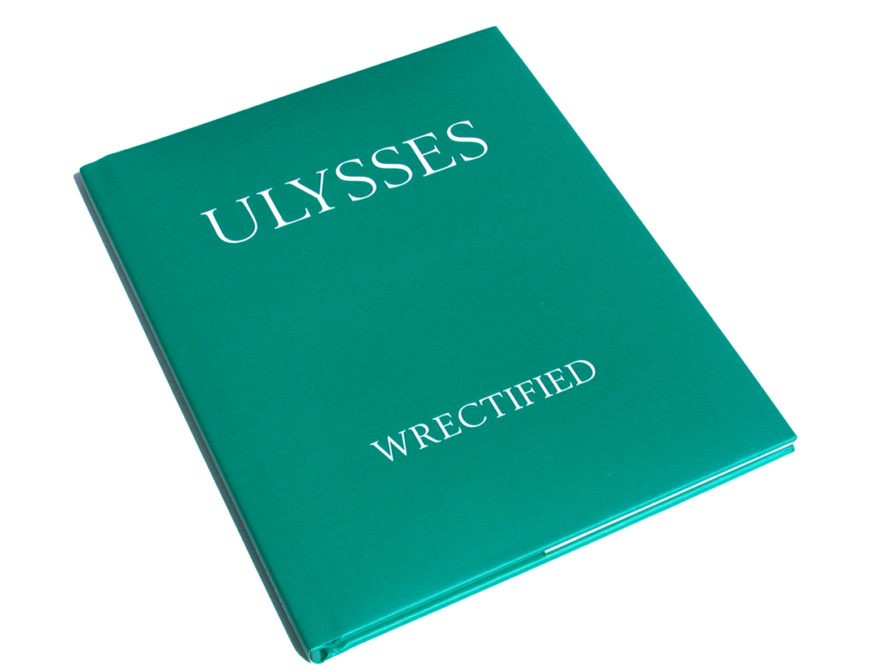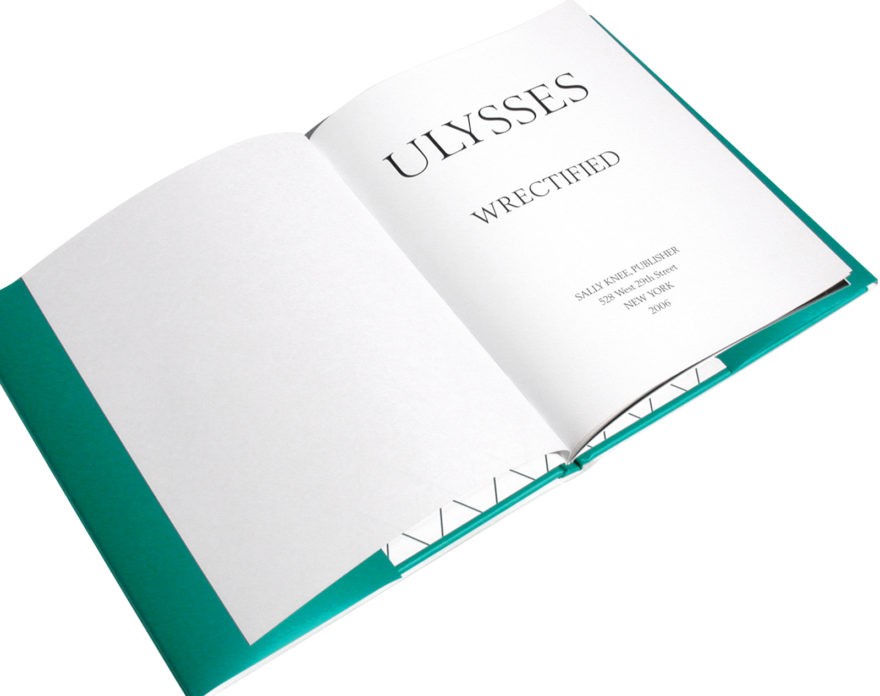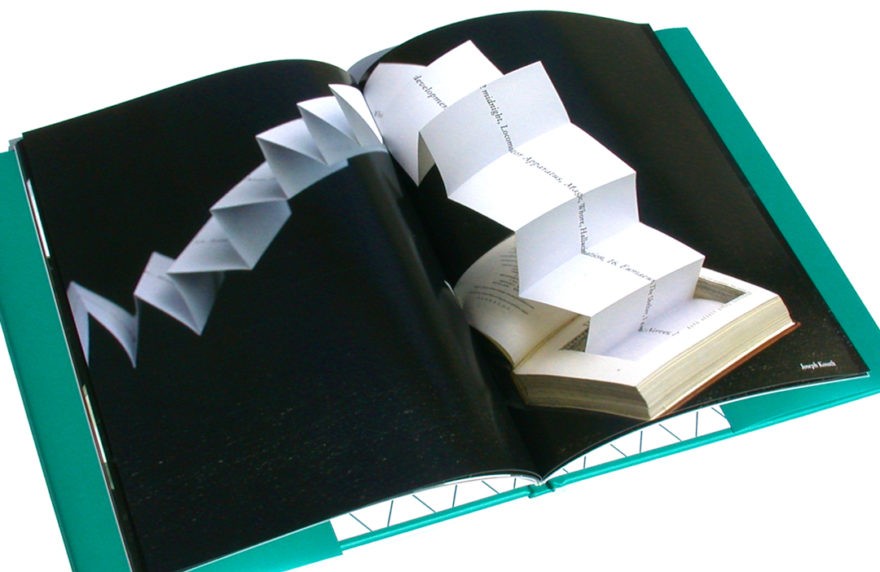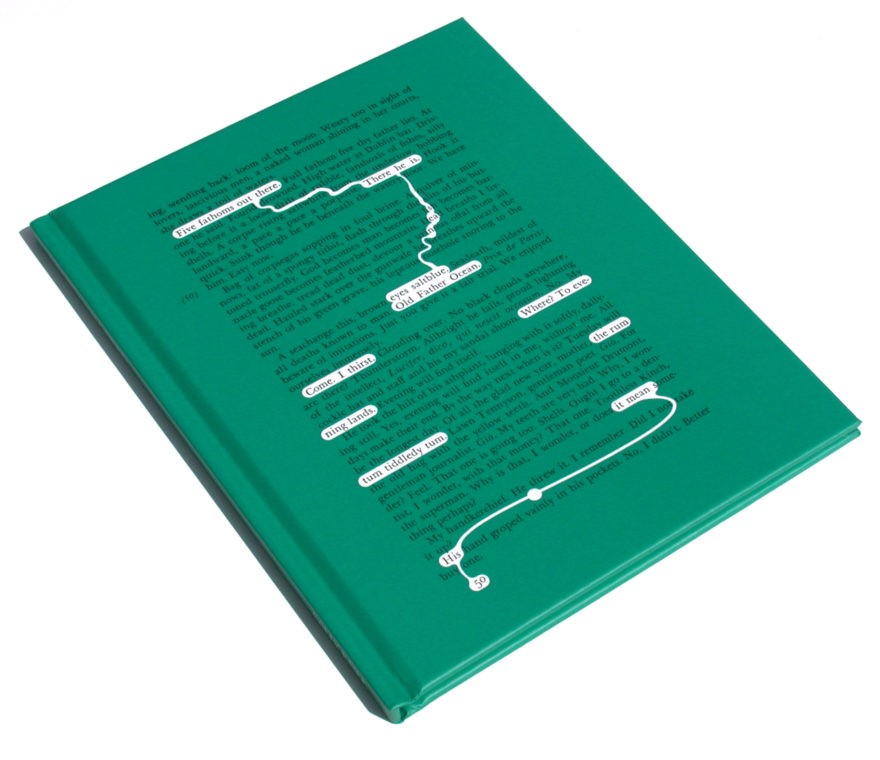To certain folks of a literate nature, June 16, marks Bloomsday — the day in 1904 which James Joyce chose to set his novel Ulysses and the date of his first date with Nora Barnacle, who would become his wife. It is also rumored, based on a letter from 1909, this was the date of their first assignation. In true Joyceian fashion, folks across the world will celebrate by drinking and carousing — especially in Dublin, where the book is set.
This day carries a personal significance because it also marks the birthday of Sean Kelly, a favorite client.
Sean is a gallerist with both Duchamp and Joyce obsessions. (The Men’s and Women’s rooms at the gallery are marked “James” and “Joyce” respectively.) For his 50th birthday, his wife Mary secretly gave gallery artists a copy of the Modern Library Edition of Ulysses, and asked each to make an “intervention,” which would then be presented at a Bloomsday bacchanalia.
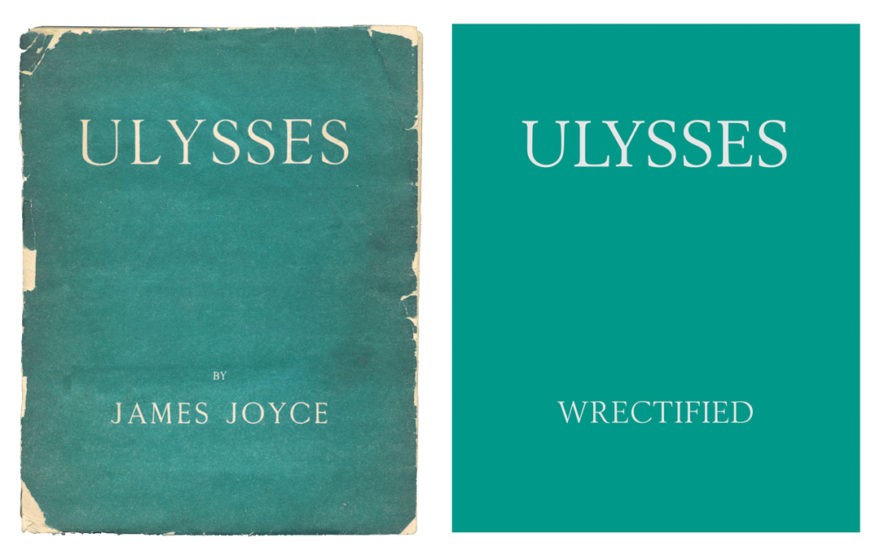
Right: Ulysses: Wrectified; June 16, 2006; New York; Sally Knee, Publisher
(“Sally Knee” is an anagram of “Sean Kelly”)
As both a gesture of thanks and as a document of the collection, the decision was made to produce a slim volume on the project. The title Ulysses: Wrectified referred to Duchamp’s notion of the “rectified readymade” and was a pun on “wrecked” — a not-so-sly nod to everyone’s state after the previous year’s party.
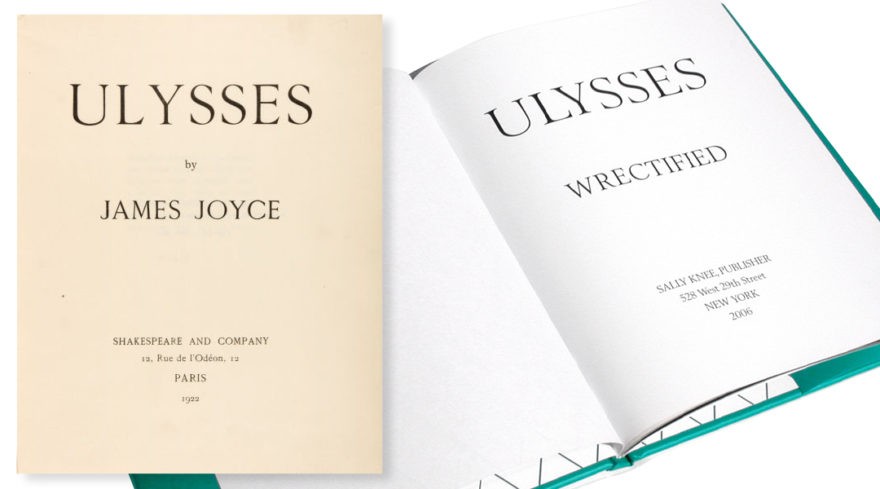
Right: Ulysses: Wrectified; title page
Joyce designed the title page and front matter for the first edition. At the time he was both experiencing eye trouble and a non-typographer. Hence, the triangle of type at the bottom, uneven line spacing and kerning problems.
Ulysses, first printed by Maurice Darantière in Dijon, was an achievement, considering that one of the most complex works in English was set by French-speaking typographers. Printing of the book came to a temporary stop in July 1921 when Darantière ran out of the letters that are more common to English than French (like “e,” “h,” “w” and “y”). In the typographer’s argot, this is known as running “out of sorts” — an appropriate description of the book’s history of typographical errors.
For Ulysses: Wrectified, rather than open the selection of typeface to whimsy, a decision was made to approximate Darantière’s Elsevir setting with a suitable digitized face. The final choice was Berling, developed from 1951–58 by the noted Swedish designer Karl-Erik Forsberg, and based on fifteenth-century Venetian faces by Aldus Manutius. Even though Berling premiered twenty-nine years after Ulysses was published, it has an appropriate fidelity to Darantière’s first edition — with one exception. Regrettably at the time of production, a version with oldstyle figures, small caps and other typographic details was not available. In this case, Berling, too, was “out of sorts.”

